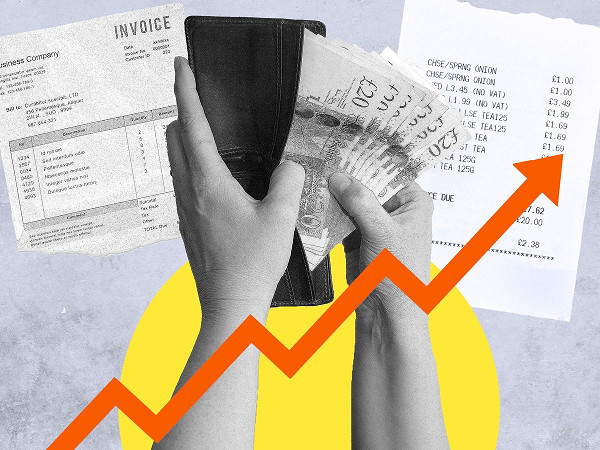Banks Get Tough on Home Loan Applications as Cost of Living Skyrockets

With inflation spiralling and the cost of living on the rise, banks and mortgage lenders have responded by tightening the application process and putting more emphasis on affordability testing.
April saw banks, such as Santander, increase their lending criteria with stringent new affordability parameters. Other banks, such as HSBC, Lloyds, and NatWest, are predicted to follow suit and make it more difficult for potential buyers to be accepted for a mortgage. Many will have to accept a smaller loan than they would otherwise have wanted.
With household bills rising due to energy cost hikes, increases in inflation, and fuel prices going through the roof, many people are finding their income squeezed to capacity. Banks are taking these additional financial burdens into account when approving buyers for home loans, resulting in many applications being rejected.
This signifies the biggest clampdown on mortgage application acceptance in more than ten years.
Mortgage brokers are warning home buyers that the increased monthly outgoings, coupled with the recent tax increases, are prompting the lending market to be more cautious about who is approved for finance, meaning that they will need to be realistic about the amount that they will be able to borrow in the current climate.
Santander led the way by increasing the criteria of its affordability test early in April but stating that the changes reflect the changes in the average household bill. The largest high-street banks are expected to follow soon.
Buyers looking at their dream home will find it; they may have to limit their expectations regarding the size of the property they will be able to buy, particularly those with credit card debts. Loan debt and divorcees who will need to pay out their exes will be penalised under the new stringent affordability test.
The previous clampdown was seen in 2014 but was not as harsh as the one expected to be implemented now and in the near future.
Ray Boulger, a senior analyst at broker John Charcol, said: ‘It is the biggest tightening [in mortgage lending] since 2009 because interest rates are increasing, and we are experiencing the largest rise in the cost of living since the 1980s.’
‘The difference between now and 2009 is that banks had a huge shortage of funds then, whereas now the issue is that it’s more difficult for some people to borrow.’
One banker said, ‘Some lenders are already changing affordability tests behind the scenes to try to mitigate the cost of living issues we’re starting to see.’
Many lenders use the Office of National Statistics to gain data in order to judge borrowers spending. This does not take into account the fact that an applicant’s individual outgoings may be lower than average but is used as a general yardstick to see if borrowers can afford the mortgage that they are applying for.
The ONS figures will shortly include the rising cost of energy, making it even more difficult for buyers to get home loans.
Santander announced that they will be taking the increased gas and electricity costs, national insurance contributions, and various tax rates into account when looking at affordability testing. They will be particularly looking at increasing the stress test for five-year fixed home loan deals, making them more difficult to get.
Andrew Montlake, of mortgage broker Coreco, said: ‘We’re starting to hear whispers of banks tightening affordability checks. All the lenders are talking about it. You can see a situation where some people can’t borrow what they need, which means they’ll have to look at cheaper property in cheaper areas.’
‘I suspect we’ll see some people miss out, especially those in need of large loans with small deposits.’
Other banks are continually reviewing the market conditions and will soon follow suit.
Barclays said: ‘We continuously monitor the cost of living, accommodating changes where appropriate within our core affordability models and assumptions on an ongoing basis.’
The affordability test generally checks to see if the buyers can afford to make payments at a standard variable rate plus an additional 3%. Tougher stress tests may also affect house prices.
Russell Galley, a managing director of Halifax, said: ‘Buyers are dealing with the prospect of higher interest rates and a higher cost of living.’
‘With affordability metrics already extremely stretched, these factors should lead to a slowdown in house price inflation over the next year.’




 0116 402 7982
0116 402 7982